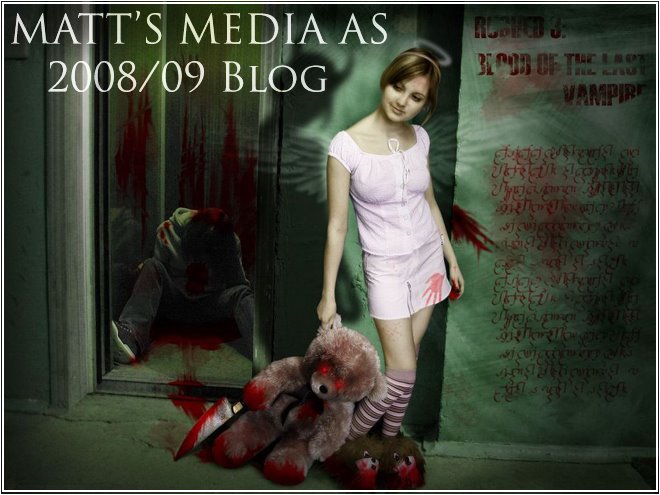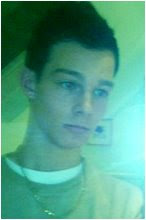THIS BLOG IS NOW CLOSED
THIS BLOG IS NOW CLOSED
THIS BLOG IS NOW CLOSED
THIS BLOG IS NOW CLOSED
THIS BLOG IS NOW CLOSED
big thanks to ms blackborow, ms thrasher and mr dean for all the help/advice/feedback
THE CASE
PRELIMINARY TASK
Sunday, February 1, 2009
Evaluation Question 7
7. Looking back at your preliminary task, what do you feel you have learnt in the progression from it to the full product?
THE BRIEF (Stage 1) – The prelim brief was a lot simpler than the film brief mainly due to the fact we didn’t have the same amount of time to complete it. The prelim was just about showing control through the language of film and creating a very short dialogue sequence while involving three important camera techniques which were, the 180 degree rule, shot reverse shot and a match on action all in an attempt to create a seamless effect of continuity. This doesn’t give much scope as to what you can do whereas the film brief allowed us to be freer with our decisions. The prelim was practice for the film brief; it was a learning experience so that we could go in to the project with a positive feeling for the process of planning, shooting and editing. The initial approach to the prelim was to start with the planning side of things, for example, getting a location, sorting out actors, a shooting script, storyboard and dialogue. We didn’t have to do research like we did with the film brief as we didn’t pick a specific genre and were not shooting an opening sequence. The prelim task helped us through the process of creating storyboards and shoot scripts which we found out were vital in the role of creating a film or any media product involving the filming process.
RESEARCH AND PLANNING (Stage 2) – There were many differences when it came to planning an actual film opening and planning the prelim task. In order to meet the film brief it was important to carry out extensive research in to genre conventions and film openings which wasn’t really needed with the prelim task. The planning process for the shoots was almost identical however. The process of creating storyboards, shooting scripts, location reccies and organising times and dates for practice shoots and real shoots were exactly the same as what we had done for the preliminary task. Having been through this process really helped it to go smoothly. When doing the prelim we split the jobs of creating storyboards and dialogue up between us, however, when doing the film brief we decided to do it all as a group so that each member of the group understood our idea clearly and the direction it was taking. Although our group didn’t spend enough time on storyboarding by the end of the project we understood just how important it was and how it can make a shoot go much more smoothly.
PRODUCTION (Stage 3) – The production process of the main project was a lot more complex than the preliminary task. The added use of lighting and a viable mise-en-scene made the filming sessions much longer and complicated. The film brief consisted of test shoots, main shoots and re-shoots as opposed to the prelim which was a lot more simple as it was just one main shoot, however, it was good practice as it made us realise that things tend to take a lot longer than you think they will. Also the time limit imposed on the prelim task made it a lot more of a focused session which in a way had its advantages and disadvantages. The advantages were that it was good practice working to a deadline and everyone in the group had to be on task ready to do their job, however, the disadvantages were that we only had one chance to get it right and for the most part once we entered the edit rooms we found out we hadn’t got it right. This did teach us a valuable lesson that you should always shoot more angles than you need and carry on shots so you have some leeway when editing.
POST-PRODUCTION (Stage 4) – The stage of post-production in the film brief was quite different to the post-production of the prelim task and this was mainly due to time. We had much more time in the main project to learn the software and get to grips with a lot of its features whereas with the prelim task a lot of people had never even used the programs before. It was, however, a good chance for people who hadn’t used it to learn and become familiar and this saved time for the main project. When editing our main goal was just to have a sequence that makes sense through the use of film language. While this is also true with the main task we also had a lot more to worry about such as mise-en-scene.
EVALUATION (Stage 5) – The evaluation of the prelim was done in class from a theory perspective by media students and it wasn’t aimed at a mass target audience unlike the film brief. This meant that each evaluation process was quite different but we gained experience in both fields of theory and appealing to a mass audience. Also, due to the fact that the film brief was a lot longer than the prelim there was a greater sense of teamwork within it as we got to know the people we were working with and what sort of ideas they have and bring to the table when making decisions which was an important experience. Moreover, working with actors I had never met before was also a positive experience and one that I didn’t get to experience in the preliminary task.
THE 5 THINGS I LEARNT FROM DOING THE PRELIMINARY TASK ARE:
- Plan the process; carry out reccies and get accessible locations, create storyboards, shooting scripts and hire actors early.
- Running the shoot; follow the storyboard but still shoot spontaneous shots as you can never have enough footage. Remember to run on the action to make life in the edit rooms easier, always shoot the master shot first and from many different distances/angles to create flexibility.
- Editing seamlessly; keep the timeline tidy so you can see where everything when re-ordering and chopping up your shots.
- Evaluating; always get feedback from the teacher, organise test shoots and take them very seriously, put a variety of questions on the questionnaire.
- Finally; always, no matter what, work as a team and keep morale high and positive.
THE BRIEF (Stage 1) – The prelim brief was a lot simpler than the film brief mainly due to the fact we didn’t have the same amount of time to complete it. The prelim was just about showing control through the language of film and creating a very short dialogue sequence while involving three important camera techniques which were, the 180 degree rule, shot reverse shot and a match on action all in an attempt to create a seamless effect of continuity. This doesn’t give much scope as to what you can do whereas the film brief allowed us to be freer with our decisions. The prelim was practice for the film brief; it was a learning experience so that we could go in to the project with a positive feeling for the process of planning, shooting and editing. The initial approach to the prelim was to start with the planning side of things, for example, getting a location, sorting out actors, a shooting script, storyboard and dialogue. We didn’t have to do research like we did with the film brief as we didn’t pick a specific genre and were not shooting an opening sequence. The prelim task helped us through the process of creating storyboards and shoot scripts which we found out were vital in the role of creating a film or any media product involving the filming process.
RESEARCH AND PLANNING (Stage 2) – There were many differences when it came to planning an actual film opening and planning the prelim task. In order to meet the film brief it was important to carry out extensive research in to genre conventions and film openings which wasn’t really needed with the prelim task. The planning process for the shoots was almost identical however. The process of creating storyboards, shooting scripts, location reccies and organising times and dates for practice shoots and real shoots were exactly the same as what we had done for the preliminary task. Having been through this process really helped it to go smoothly. When doing the prelim we split the jobs of creating storyboards and dialogue up between us, however, when doing the film brief we decided to do it all as a group so that each member of the group understood our idea clearly and the direction it was taking. Although our group didn’t spend enough time on storyboarding by the end of the project we understood just how important it was and how it can make a shoot go much more smoothly.
PRODUCTION (Stage 3) – The production process of the main project was a lot more complex than the preliminary task. The added use of lighting and a viable mise-en-scene made the filming sessions much longer and complicated. The film brief consisted of test shoots, main shoots and re-shoots as opposed to the prelim which was a lot more simple as it was just one main shoot, however, it was good practice as it made us realise that things tend to take a lot longer than you think they will. Also the time limit imposed on the prelim task made it a lot more of a focused session which in a way had its advantages and disadvantages. The advantages were that it was good practice working to a deadline and everyone in the group had to be on task ready to do their job, however, the disadvantages were that we only had one chance to get it right and for the most part once we entered the edit rooms we found out we hadn’t got it right. This did teach us a valuable lesson that you should always shoot more angles than you need and carry on shots so you have some leeway when editing.
POST-PRODUCTION (Stage 4) – The stage of post-production in the film brief was quite different to the post-production of the prelim task and this was mainly due to time. We had much more time in the main project to learn the software and get to grips with a lot of its features whereas with the prelim task a lot of people had never even used the programs before. It was, however, a good chance for people who hadn’t used it to learn and become familiar and this saved time for the main project. When editing our main goal was just to have a sequence that makes sense through the use of film language. While this is also true with the main task we also had a lot more to worry about such as mise-en-scene.
EVALUATION (Stage 5) – The evaluation of the prelim was done in class from a theory perspective by media students and it wasn’t aimed at a mass target audience unlike the film brief. This meant that each evaluation process was quite different but we gained experience in both fields of theory and appealing to a mass audience. Also, due to the fact that the film brief was a lot longer than the prelim there was a greater sense of teamwork within it as we got to know the people we were working with and what sort of ideas they have and bring to the table when making decisions which was an important experience. Moreover, working with actors I had never met before was also a positive experience and one that I didn’t get to experience in the preliminary task.
THE 5 THINGS I LEARNT FROM DOING THE PRELIMINARY TASK ARE:
- Plan the process; carry out reccies and get accessible locations, create storyboards, shooting scripts and hire actors early.
- Running the shoot; follow the storyboard but still shoot spontaneous shots as you can never have enough footage. Remember to run on the action to make life in the edit rooms easier, always shoot the master shot first and from many different distances/angles to create flexibility.
- Editing seamlessly; keep the timeline tidy so you can see where everything when re-ordering and chopping up your shots.
- Evaluating; always get feedback from the teacher, organise test shoots and take them very seriously, put a variety of questions on the questionnaire.
- Finally; always, no matter what, work as a team and keep morale high and positive.
Labels:
Evaluation,
Question 7
Evaluation Question 6
6. What have you learnt about technologies from the process of constructing this product?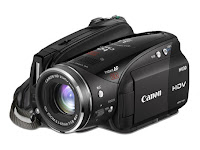
Throughout the project I have come in to contact with a lot of new technology, software and hardware. I have learnt a lot about different types of video camera’s as we had Sony Mini HDV and Cannon HDV camera’s available to us. Although the camera’s had auto-focus, I would like to learn how to use it manually as it’s possible to create some nice effects such as a focus shift. Moreover, all the equipment which goes hand in hand with the camera was new to me, such as tripods which made filming a lot steadier and controlled allowing for smooth pans and still shots. Also, the onboard mic and external mic which came with a boom pole and headphones made recording sound at a higher quality possible. I learnt that it’s important to listen for any background noise which you don’t want in the shot. The last set of equipment on the hardware front was the lighting kits. We had PAG lights and a studio lighting kit available to us which was really new to me as I had no idea just how powerful the lights could be and it helped us shoot outside during the night making everything we wanted really light and clear. It’s important to turn the lights off when you’re not using them as they can get really hot. Lighting was one of the strongest points of our product in my opinion and is also very important for our genre of film noir so we were very lucky we had such great equipment at hand.
During post-production we got to experience a lot of software that we had used and hadn’t used before. For example, Adobe Premiere CS3 the editing software was a program that I had used before, however, I developed my editing skills and learnt a lot throughout the project and became much more familiar with the program. Processes such as:

- Capturing
- Rendering
- Speed and duration
- Video and audio transitions
- Use of the razor tool
- Implementation of a soundtrack and Foley FX
- Key framing
- Titling
- A variety of brightness and contrast tools
- Pan and crop
- Working with a detailed timeline
All of these were skills which I developed while using Adobe Premiere CS3. Apart from the editing software we also used Adobe Photoshop CS3 and Adobe Fireworks to create titles and our production logo. These were all PC based programs and although we did have a lot of Mac software available to us, such as I-Movie and Soundtrack Pro we didn’t need to use them for our project. One of the main technologies we used right from the beginning of the project was blogger. It allowed us to present research and planning in detail and to an attractive high standard as well as serving as good communication between the group.

Throughout the project I have come in to contact with a lot of new technology, software and hardware. I have learnt a lot about different types of video camera’s as we had Sony Mini HDV and Cannon HDV camera’s available to us. Although the camera’s had auto-focus, I would like to learn how to use it manually as it’s possible to create some nice effects such as a focus shift. Moreover, all the equipment which goes hand in hand with the camera was new to me, such as tripods which made filming a lot steadier and controlled allowing for smooth pans and still shots. Also, the onboard mic and external mic which came with a boom pole and headphones made recording sound at a higher quality possible. I learnt that it’s important to listen for any background noise which you don’t want in the shot. The last set of equipment on the hardware front was the lighting kits. We had PAG lights and a studio lighting kit available to us which was really new to me as I had no idea just how powerful the lights could be and it helped us shoot outside during the night making everything we wanted really light and clear. It’s important to turn the lights off when you’re not using them as they can get really hot. Lighting was one of the strongest points of our product in my opinion and is also very important for our genre of film noir so we were very lucky we had such great equipment at hand.
During post-production we got to experience a lot of software that we had used and hadn’t used before. For example, Adobe Premiere CS3 the editing software was a program that I had used before, however, I developed my editing skills and learnt a lot throughout the project and became much more familiar with the program. Processes such as:

- Capturing
- Rendering
- Speed and duration
- Video and audio transitions
- Use of the razor tool
- Implementation of a soundtrack and Foley FX
- Key framing
- Titling
- A variety of brightness and contrast tools
- Pan and crop
- Working with a detailed timeline
All of these were skills which I developed while using Adobe Premiere CS3. Apart from the editing software we also used Adobe Photoshop CS3 and Adobe Fireworks to create titles and our production logo. These were all PC based programs and although we did have a lot of Mac software available to us, such as I-Movie and Soundtrack Pro we didn’t need to use them for our project. One of the main technologies we used right from the beginning of the project was blogger. It allowed us to present research and planning in detail and to an attractive high standard as well as serving as good communication between the group.
Labels:
Evaluation,
Question 6
Evaluation Question 5
5. How did you attract/address your audience?
In today’s industry there are so many ways to get your film noticed and much of this is to do with new technologies. The use of internet has become a massive way to promote films and their narrative image with interactive film sites, YouTube and Facebook all of which were useful to us. However, it is also important to address your audience within the film.
is to do with new technologies. The use of internet has become a massive way to promote films and their narrative image with interactive film sites, YouTube and Facebook all of which were useful to us. However, it is also important to address your audience within the film.
We attracted our audience by doing the following within the film:
• We shot it a night, meaning the film had a dark and fearful image. This was important when trying to create a feeling of enigma.
• Had action and violence in the opening drawing our core target audience in from the start. In the last shot with the gunshot we wanted the audience to jump when they heard it, and during our test screening most people did.
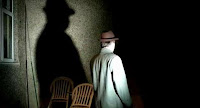
• Stuck to the conventions of film noir by using lighting which created intimidating shadows on walls. An example of this is when the killer leaves the house and enters the garden to make his escape.
• Used 2 very different locations: a house which people are familiar with as it seems realistic and a dark alleyway which people are not so familiar with. The alleyway could put people in the audience out of their comfort zones. This further creates enigma as the audience has an expectation that something is about to happen.
• Used eerier and atmospheric music to anchor all the feeling of tension and mystery.
• A seamless, linear editing allowed the viewer to focus on the tension and mystery which was being created through music, location, lighting and narrative structure.

• The gunshot at the end creates an enigma which cannot be satisfied without seeing the rest of the film, this draws the audience in and makes them want to see more.
In order to address our audience properly it was important for the use of internet to prevail above all else. Due to the film being a more independent film and low budget it wouldn’t be possible to put adverts on bus’s and bus stops. However, through the use of Facebook and showing our film opening on YouTube it would attract our core target audience. The younger years of our target audience would relate to this kind of promotion as it is being shown through media they understand.
In today’s industry there are so many ways to get your film noticed and much of this
 is to do with new technologies. The use of internet has become a massive way to promote films and their narrative image with interactive film sites, YouTube and Facebook all of which were useful to us. However, it is also important to address your audience within the film.
is to do with new technologies. The use of internet has become a massive way to promote films and their narrative image with interactive film sites, YouTube and Facebook all of which were useful to us. However, it is also important to address your audience within the film.We attracted our audience by doing the following within the film:
• We shot it a night, meaning the film had a dark and fearful image. This was important when trying to create a feeling of enigma.
• Had action and violence in the opening drawing our core target audience in from the start. In the last shot with the gunshot we wanted the audience to jump when they heard it, and during our test screening most people did.

• Stuck to the conventions of film noir by using lighting which created intimidating shadows on walls. An example of this is when the killer leaves the house and enters the garden to make his escape.
• Used 2 very different locations: a house which people are familiar with as it seems realistic and a dark alleyway which people are not so familiar with. The alleyway could put people in the audience out of their comfort zones. This further creates enigma as the audience has an expectation that something is about to happen.
• Used eerier and atmospheric music to anchor all the feeling of tension and mystery.
• A seamless, linear editing allowed the viewer to focus on the tension and mystery which was being created through music, location, lighting and narrative structure.

• The gunshot at the end creates an enigma which cannot be satisfied without seeing the rest of the film, this draws the audience in and makes them want to see more.
In order to address our audience properly it was important for the use of internet to prevail above all else. Due to the film being a more independent film and low budget it wouldn’t be possible to put adverts on bus’s and bus stops. However, through the use of Facebook and showing our film opening on YouTube it would attract our core target audience. The younger years of our target audience would relate to this kind of promotion as it is being shown through media they understand.
Labels:
Evaluation,
Question 5
Evaluation Question 4
4. Who would be the audience for your media product?
Audience Profile

The core audience is someone who enjoys the cult status type of film such as 'The Blair Witch Project'. They like a low budget feel to a movie which is in it's own sense original. The film would be available internationally but would idealy thrive in the local area of London as this is where independent cinema's would be showing it. Someone who likes a focus on camera techniques, lighting and editing to create something which looks artistic but real at the same time would relate well to this film.
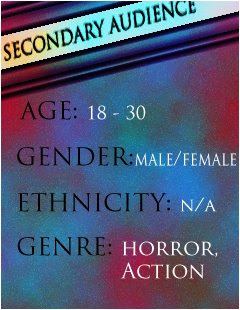
The secondary audience would have to be aware of films which are not shown in mainstream cinema's such as The Odeon and Cineworld. In this sense the secondary audience might not be very broad, and both audience's are a kind of niche group. With this in mind, if the film had a higher budget for marketing it would be able to be advertised to the mainstream and might be enjoyed nationally.
The audience of my product have to be able to relate to the characters and it is important that they understand each characters' issues and decisions within the film. For example, a characters motive to kill has to be understood by the audience. In the finished product the gunshot at the end was committed by the detective as he and the killer/assassin have a history which is personal. Although this wasn’t made clear in the opening it would have by the end of the film and the audience has to be able to relate to the character and understand why he did what he did. The audience for this product is also someone who just generally likes film and likes the genre of crime and film noir. The male gender has also been able to relate to the film on a higher level than the female gender and this might be because of the violence depicted in the film. Evidence for this can be seen in our questionnaires which were taken by over 30 people both male and female, a summary of the results can be found on the group blog.
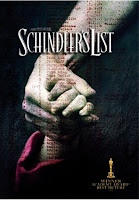
It is also something which is a lot harder to define than say films such as 'Schindler’s List' and the recent film 'Defiance', which focus on the persecution of Jews in the Second World War. For these films a clear target audience is the Jewish people as they are the people who could have ties to the issue and thus most relate to the film. They are going to be much more emotionally involved than someone who can’t relate to such a persecution of a people and they are there for other elements of the film which may include a gripping story or exciting action.
Audience Profile

The core audience is someone who enjoys the cult status type of film such as 'The Blair Witch Project'. They like a low budget feel to a movie which is in it's own sense original. The film would be available internationally but would idealy thrive in the local area of London as this is where independent cinema's would be showing it. Someone who likes a focus on camera techniques, lighting and editing to create something which looks artistic but real at the same time would relate well to this film.

The secondary audience would have to be aware of films which are not shown in mainstream cinema's such as The Odeon and Cineworld. In this sense the secondary audience might not be very broad, and both audience's are a kind of niche group. With this in mind, if the film had a higher budget for marketing it would be able to be advertised to the mainstream and might be enjoyed nationally.
The audience of my product have to be able to relate to the characters and it is important that they understand each characters' issues and decisions within the film. For example, a characters motive to kill has to be understood by the audience. In the finished product the gunshot at the end was committed by the detective as he and the killer/assassin have a history which is personal. Although this wasn’t made clear in the opening it would have by the end of the film and the audience has to be able to relate to the character and understand why he did what he did. The audience for this product is also someone who just generally likes film and likes the genre of crime and film noir. The male gender has also been able to relate to the film on a higher level than the female gender and this might be because of the violence depicted in the film. Evidence for this can be seen in our questionnaires which were taken by over 30 people both male and female, a summary of the results can be found on the group blog.

It is also something which is a lot harder to define than say films such as 'Schindler’s List' and the recent film 'Defiance', which focus on the persecution of Jews in the Second World War. For these films a clear target audience is the Jewish people as they are the people who could have ties to the issue and thus most relate to the film. They are going to be much more emotionally involved than someone who can’t relate to such a persecution of a people and they are there for other elements of the film which may include a gripping story or exciting action.
Labels:
Evaluation,
Question 4
Evaluation Question 3
3. What kind of media institution might distribute your media product and why?
Our media product, although might be enjoyed by a mainstream or Hollywood type of audience, is a cult status type of film. Reasons why it should be shown in independent cinema's:
- The genre of film noir is not one that today’s mainstream is too familiar with. Films like Sin City have given a modern take on the genre which managed to attract both audiences’.
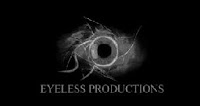
-Our production company, Eyeless Productions, makes a lot of films in the genre of film noir, thriller and horror.
-The film opening we have created looks and feels like an independent, student film.
Moreover, the idea of showcasing it at film festivals is also a good idea as much emphasis is placed upon camera work and editing which would be much more appreciated in this audience. The low budget feel and lack of major special effects also means that it might not attract the mainstream audience who are increasingly becoming used to massive budget films such as '300' (2006 Zach Snyder) and 'The Golden Compass' (2007 Chris Weitz) which completely engulf the idea of CGI, visual effects and extensive built sets.
The Eyeless Production Company make films using low budgets which hinder the ability to promote and distribute those films on a mass scale. The internet, however, allows us to reach the cult status audience we aim for. Methods such as:
-Youtube
-Facebook
-The Eyeless Production site
-Cult film forums e.g. The Cult section of www.fanforum.com
All of these technologies give us, a producer and distributer, the opportunity to present films through a medium our target audience understands. Our production company is similar to the likes of Haxan Films Production Company who produced 'The Blair Witch Project' (1999 Daniel Myrick). They used their low budget to their advantage and created something new and original which was a hand held movie which made it appear more realistic. The same technique was also used in the movie Cloverfield (2008 Matt Reeves).
Our media product, although might be enjoyed by a mainstream or Hollywood type of audience, is a cult status type of film. Reasons why it should be shown in independent cinema's:
- The genre of film noir is not one that today’s mainstream is too familiar with. Films like Sin City have given a modern take on the genre which managed to attract both audiences’.

-Our production company, Eyeless Productions, makes a lot of films in the genre of film noir, thriller and horror.
-The film opening we have created looks and feels like an independent, student film.
Moreover, the idea of showcasing it at film festivals is also a good idea as much emphasis is placed upon camera work and editing which would be much more appreciated in this audience. The low budget feel and lack of major special effects also means that it might not attract the mainstream audience who are increasingly becoming used to massive budget films such as '300' (2006 Zach Snyder) and 'The Golden Compass' (2007 Chris Weitz) which completely engulf the idea of CGI, visual effects and extensive built sets.
The Eyeless Production Company make films using low budgets which hinder the ability to promote and distribute those films on a mass scale. The internet, however, allows us to reach the cult status audience we aim for. Methods such as:

-Youtube
-The Eyeless Production site
-Cult film forums e.g. The Cult section of www.fanforum.com
All of these technologies give us, a producer and distributer, the opportunity to present films through a medium our target audience understands. Our production company is similar to the likes of Haxan Films Production Company who produced 'The Blair Witch Project' (1999 Daniel Myrick). They used their low budget to their advantage and created something new and original which was a hand held movie which made it appear more realistic. The same technique was also used in the movie Cloverfield (2008 Matt Reeves).
Labels:
Evaluation,
Question 3
Evaluation Question 2
2. How does your media product represent particular social groups?
The film industry has many target audiences to appeal to when creating a film as not everyone can relate to or enjoy the same type of film. This means that films need to attract a specific type of audience through a theme that the target audience would enjoy and relate to. The area’s for specifying a target audience can be broken up in to: age, ethnicity and gender.
For my specific film opening the core audience would be males of all ages (mainly over 18) who enjoy a cult status type film as the genre of film noir is not very mainstream. The product could be identified with an audience who enjoy films such as ‘Sin City’, ‘Blade Runner’ and older film noir classics such as ‘Scarface’. The film doesn’t represent women and is effectively aimed at a male audience. This is because there is nothing in the film that women could necessarily relate to as both characters are male and a recurring feature of the film is violence which is not as popular amongst women as it is men. ‘Sin City’ was a film which had a lot of balance in the area of gender. There were stereotypical women who hated the violence around them were scared a lot of the time and needed protecting but there were also women who killed and were just as brutal as the males in the film. An effective way to attract a target audience is to have characters which are relatable and identifiable to that audience. Our two characters were a detective and a killer:
Detective – A stereotypical detective wearing and shirt and tie with the top button undone. He is a 28 year old Caucasian man which is a typical feature of a detective in film noir. The location of his house tells us he is of a working middle class background which a large majority of the audience could relate to. This character is similar to J.J. 'Jake' Gittes played by Jack Nicholson in ‘Chinatown’. This character is understandable to a lot of males with stressful jobs, the act of working in to the night at home is something a lot of men and even women could relate to. With stress being a very common factor in today’s society he is identifiable on that level with the audience as well.
Killer – Wearing a typical film noir trench coat with gloves and hat suggesting he is quite mysterious and keeps to himself. This is clear as he keeps his head down when walking and is generally expressionless throughout the sequence. His costume, especially the gloves, gives an impression of a professional killer who knows what he’s doing. This is a typical character within film noir and one many fans of the genre could relate to.
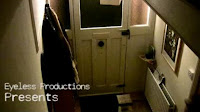
The location is also an important factor in drawing in a specific audience and our opening sequence was specifically set in two locations, a middle-class house and a dark alleyway. The house is a location which many people could relate to as it is a familiar setting with everyone and the idea of someone being in your house while you don’t know is somewhat unsettling. The alleyway, however, contrasts to this and intends to put the audience out of their comfort zone and in to an area where they would feel vulnerable and maybe even scared. Due to these feelings the audience knows that something is about to happen and the fact that they don’t know what is very gripping.
contrasts to this and intends to put the audience out of their comfort zone and in to an area where they would feel vulnerable and maybe even scared. Due to these feelings the audience knows that something is about to happen and the fact that they don’t know what is very gripping.
The film industry has many target audiences to appeal to when creating a film as not everyone can relate to or enjoy the same type of film. This means that films need to attract a specific type of audience through a theme that the target audience would enjoy and relate to. The area’s for specifying a target audience can be broken up in to: age, ethnicity and gender.
For my specific film opening the core audience would be males of all ages (mainly over 18) who enjoy a cult status type film as the genre of film noir is not very mainstream. The product could be identified with an audience who enjoy films such as ‘Sin City’, ‘Blade Runner’ and older film noir classics such as ‘Scarface’. The film doesn’t represent women and is effectively aimed at a male audience. This is because there is nothing in the film that women could necessarily relate to as both characters are male and a recurring feature of the film is violence which is not as popular amongst women as it is men. ‘Sin City’ was a film which had a lot of balance in the area of gender. There were stereotypical women who hated the violence around them were scared a lot of the time and needed protecting but there were also women who killed and were just as brutal as the males in the film. An effective way to attract a target audience is to have characters which are relatable and identifiable to that audience. Our two characters were a detective and a killer:
Detective – A stereotypical detective wearing and shirt and tie with the top button undone. He is a 28 year old Caucasian man which is a typical feature of a detective in film noir. The location of his house tells us he is of a working middle class background which a large majority of the audience could relate to. This character is similar to J.J. 'Jake' Gittes played by Jack Nicholson in ‘Chinatown’. This character is understandable to a lot of males with stressful jobs, the act of working in to the night at home is something a lot of men and even women could relate to. With stress being a very common factor in today’s society he is identifiable on that level with the audience as well.
Killer – Wearing a typical film noir trench coat with gloves and hat suggesting he is quite mysterious and keeps to himself. This is clear as he keeps his head down when walking and is generally expressionless throughout the sequence. His costume, especially the gloves, gives an impression of a professional killer who knows what he’s doing. This is a typical character within film noir and one many fans of the genre could relate to.

The location is also an important factor in drawing in a specific audience and our opening sequence was specifically set in two locations, a middle-class house and a dark alleyway. The house is a location which many people could relate to as it is a familiar setting with everyone and the idea of someone being in your house while you don’t know is somewhat unsettling. The alleyway, however,
 contrasts to this and intends to put the audience out of their comfort zone and in to an area where they would feel vulnerable and maybe even scared. Due to these feelings the audience knows that something is about to happen and the fact that they don’t know what is very gripping.
contrasts to this and intends to put the audience out of their comfort zone and in to an area where they would feel vulnerable and maybe even scared. Due to these feelings the audience knows that something is about to happen and the fact that they don’t know what is very gripping.
Labels:
Evaluation,
Question 2
Subscribe to:
Posts (Atom)
